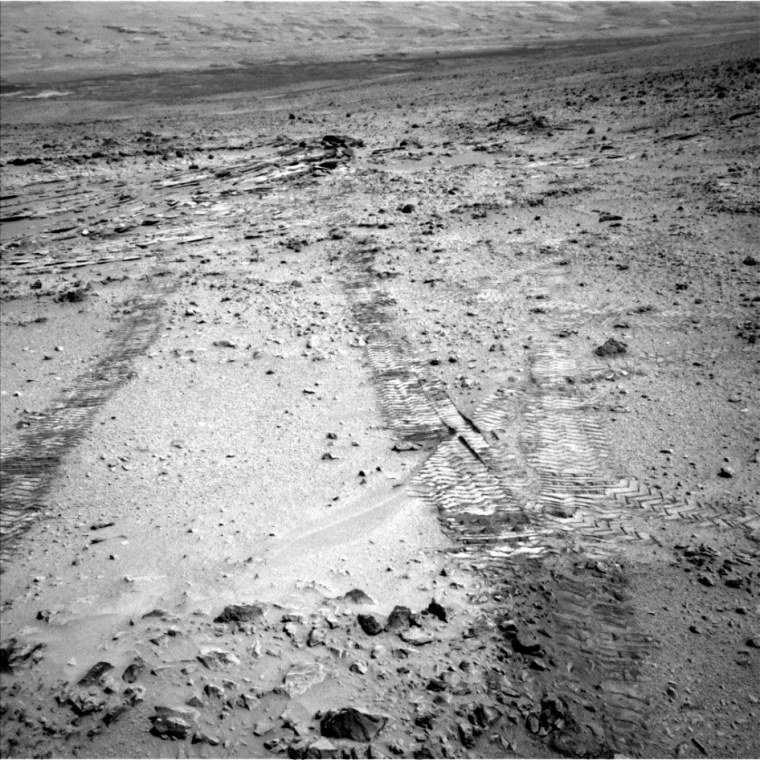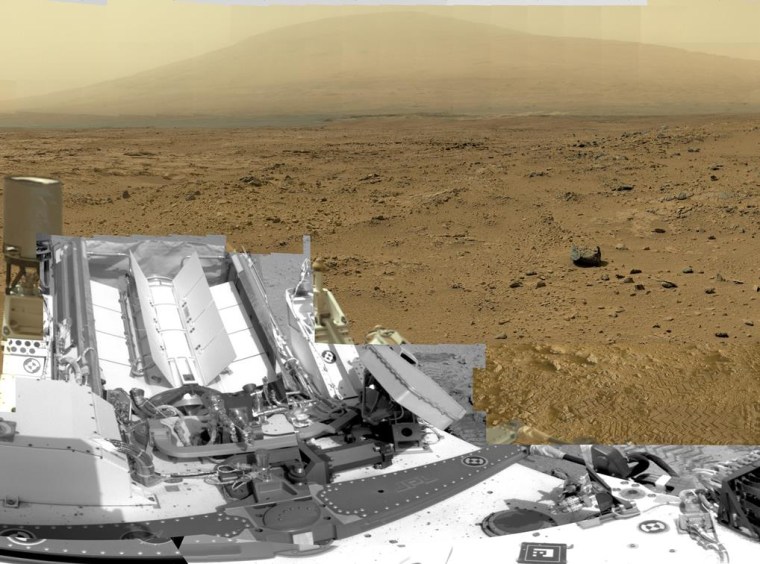LOS ANGELES — Martian mountain, here Curiosity comes.
The NASA rover has officially kicked off its long-delayed road trip to Mount Sharp, a trek that involves rolling over rocky landscapes.
Since the Fourth of July, the six-wheel rover has driven 190 feet (58 meters) to the southwest, leaving behind the spot where it spent the past seven months performing science experiments.
From this point on, the team is in a "drive, drive, drive mentality," mission deputy scientist Ashwin Vasavada said Monday.
The journey, expected to last nine months to a year with stops, will take Curiosity through unfamiliar terrain. With the help of images taken from space, mission managers plotted a path that was mostly straight with not a lot of boulders, steep slopes and other potential obstacles. The drive is still expected to be rugged, but Curiosity was built to handle a few bumps, Vasavada said.
Perhaps the trickiest part will come toward the end when Curiosity will have to cross a bank of sand dunes to reach the base of the mountain.

Curiosity landed in Gale Crater near the Martian equator to great fanfare last August with its sights set on the 3-mile-high (5-kilometer-high) Mount Sharp rising from the crater floor.
About the size of a car, Curiosity is the most high-tech rover sent to the Red Planet. At $2.5 billion, it's also the most expensive Mars mission.
Instead of making a beeline for the mountain, project leaders decided to make a pit stop east of the landing site so that Curiosity could drill into rocks. The detour turned out to be scientifically worthwhile: Curiosity came across an ancient streambed and found rounded rocks that were shaped by the forces of past water.
Although some experiments took longer than expected to complete, Curiosity already fulfilled a key requirement of the mission by finding evidence of a habitable environment where microbes could survive.
Scientists have said the rover will linger at a spot as long as the discoveries keep coming. But with the landing anniversary nearing, there's pressure to move on to explore the alluring rock layers at the foot of the mountain, which may have preserved the chemical buildings blocks of life.
"We really want to get there," Vasavada said.
Curiosity likely will plow on for at least a month before stopping to drill into rocks and dirt. During the trip, it will snap pictures of its surroundings. Before every drive, there are plans to zap at rocks with its laser and measure radiation levels between breaks.
More about Curiosity's mission:
